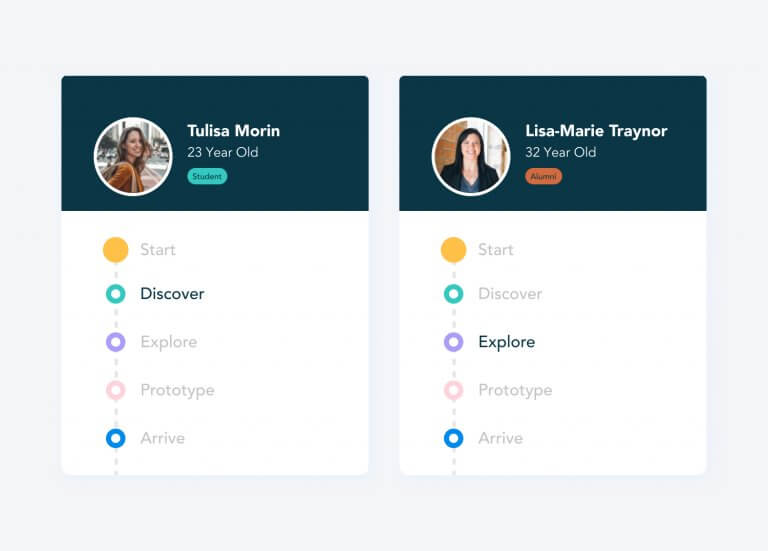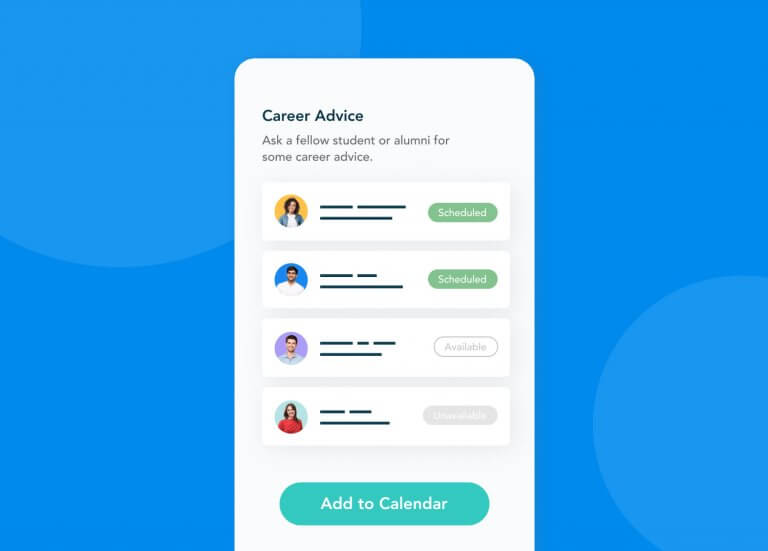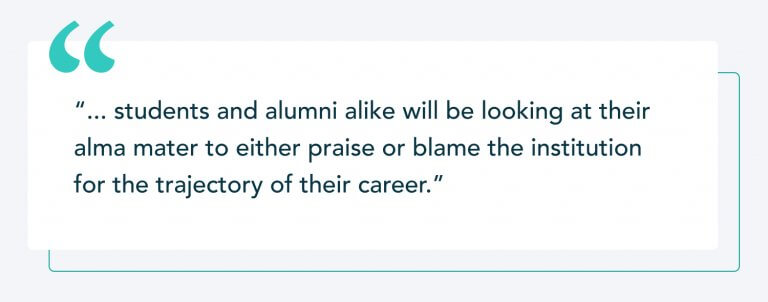Academic Affairs
Career Services For All. No, Seriously.
Fighting higher ed’s perception problem by extending lifetime value. As the new semester kicks off, in an all too predictable […]
Academic Affairs
Fighting higher ed’s perception problem by extending lifetime value. As the new semester kicks off, in an all too predictable […]

As the new semester kicks off, in an all too predictable way, the national conversation about higher education has once again returned to value. Think tanks such as Third Way have published surveys indicating that more and more students believe their degree will not be worth the cost. Third Way also tried to quantify the ROI of specific programs in the hopes that students may get more “Bang for their Buck.” The St. Louis Federal Reserve has even identified that the wealth premium between those with a college degree and those without it is closing.
Of course, publications like the Wall Street Journal, Forbes, and the New York Times have pushed this research and more beyond academia. As a result, CNBC reported that we may see another wave of students who simply opt-out of college.
Higher tuitions, increased levels of debt, stagnant wage growth…even a humanities advocate like Sandra Oh’s English department leader in The Chair would agree that demonstrating value through career support needs to be a larger priority if higher education is to deliver on its promise.
Much like students of the past, young people are lost. Even though the #1 reason they pursue higher education is meaningful work, they really don’t know where to start to find it. Many are simply going through the motions in the hopes that getting the degree will be enough to get them that good job.
A newer phenomenon is the extension of this wandering beyond graduation. Alumni of all ages continually pursue opportunities to grow in their careers and discover other paths that might lead them to a more fulfilling life.
At the end of the day, both students and alumni are career explorers in search of new paths and trails that might provide them with a meaningful career. They are both also faced with the same question. How do I discover these paths?

In the old days, the Career Center was the primary source. You visited the office early in your academic career and got a list of professions that were suited to your intended major. This was helpful for a few students, specifically ones whose major was more directly focused on a profession. An Accounting major looking over the different types of accounting careers could be inspired by an industry they might not have thought of.
But for the rest of the students, static lists of professions were too broad to really provide any help. And with a national average ratio of 1,735 students to every 1 career services staff member, it was impossible for over-extended counselors to help every student; let alone any alumni looking for new ideas.
Today, the game has changed. Career explorers are more likely to crowdsource ideas outside of the Career Center. Students and alumni alike are talking to their professors and finding practitioners willing to share their experience. Companies themselves are starting to take notice of this exploration and are providing avenues for skill building and certification that help with this journey.
More and more, exploration is happening through resources not provided directly by the explorer’s college career center.

With all that is available now to career explorers, there is a lot of noise.
LinkedIn is one such tool that provides an example of the benefits and challenges associated with all these resources. It is pretty much a requirement that every professional have an account, meaning that there are endless opportunities to see people’s career history and connect.
But it also may be the best example of a resource that has fallen victim to its success. LinkedIn inboxes are flooded with sponsored ads, sales outreach, and other messages that crowd out those truly looking for help. I even received a sponsored message from American Express last week. Many of us can relate to the helpless feeling of sending a LinkedIn message in the hopes of learning about a career path only to be drowned out by the credit card companies, salespeople, and consultants attempting to sell their wares.
Other resources available tend to be more transactional and less exploratory. Navigating through a job board can sometimes leave students and alumni more frustrated than when they started. Even if they see a position they might love, they still have no idea what they need to do to obtain the laundry list of qualifications.
Social media sites like YouTube or Facebook can offer some assistance as well. But at the end of the day, these sites are not designed for career exploration. It’s like trying to get directions using a map in a history textbook. Career guidance and advice competes for clicks and views with sports highlights and comedy clips.
Of course, what makes LinkedIn, social media, and other resources so attractive as exploration tools is the immediacy. A student or alumni can access those sites anytime, anywhere.
This is something that is expected in today’s day and age. The majority of our days are spent in the digital world, leveraging technology to do everything from order groceries to learn a new language. The pandemic has only served to increase technology’s importance in our lives, as video chat and other communication tools have replaced the office as the backbone of how businesses do their work.
But perhaps more importantly for career explorers, moments of inspiration can be fleeting. An inspired alum battles the feeling that they are too far into their careers to start something new. Quickly seeing an opportunity to grow towards a new path provides much needed immediate support. A student can not wait until an appointment at the career center that may be weeks away. Helping explorers turn inspiration into action quickly is key.

Like it or not, higher education is fighting a perception battle. As we enter into a new era of consumer awareness, students and alumni alike will be looking at their alma mater to either praise or blame the institution for the trajectory of their career.
For students and their families, they will be analyzing not just the “placement” statistics delivered during college tours and in the brochures, they will look closely at HOW these get achieved. For alumni, they will expect that since their college helped them launch a career, their college can help them continue to grow or even pivot in their journey.
Institutions have begun to recognize that Career Services can no longer be confined to a physical space and focused on just the students. Engaging students early in the career exploration process creates focused and inspired learners confident in their ability to be successful. Those students turn into attached alumni who trust their institution to support them as they navigate a working world where job-switching is commonplace.
Without this approach, higher education will continue to fight this uphill perception battle. Alumni who are 10-15 years into their careers will look back with regret, saying “If I had only known…” and “If today I could only…” They will disengage from the institution as they struggle with their purpose in a less than satisfactory career. And, of course, they will fail to participate as a university volunteer, advocate, or donor.
As the pandemic continues to reshape our approach to higher education, institutions have the opportunity to strategically and intentionally extend their value beyond just four years, and help their constituents see the lifetime value promised by higher education.